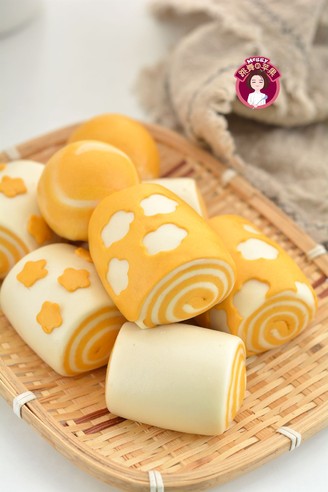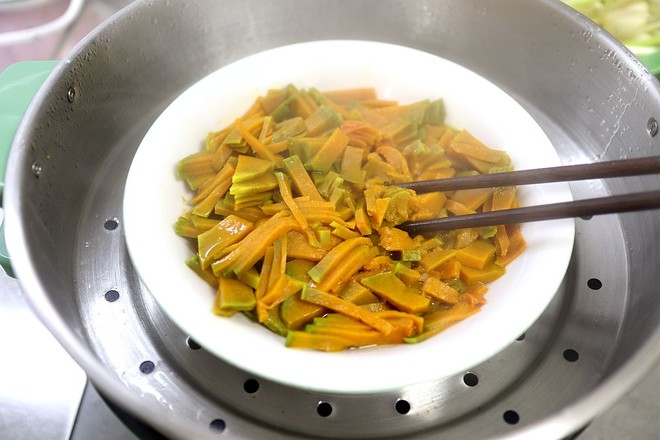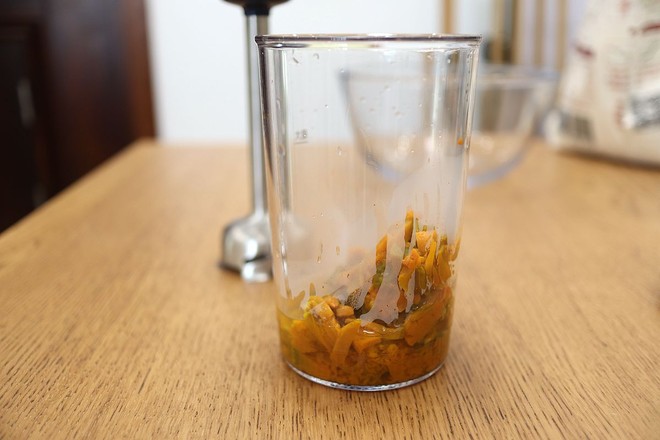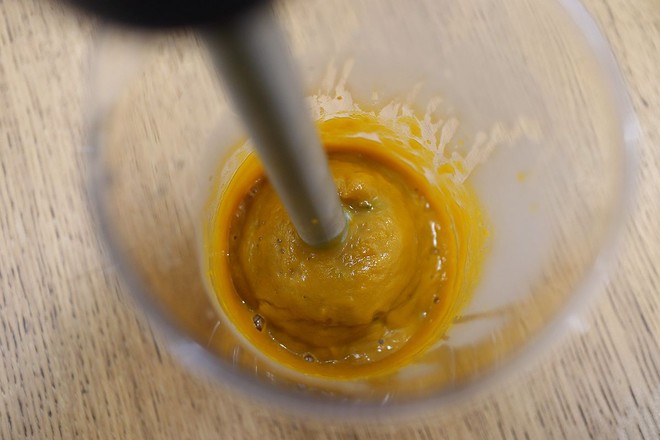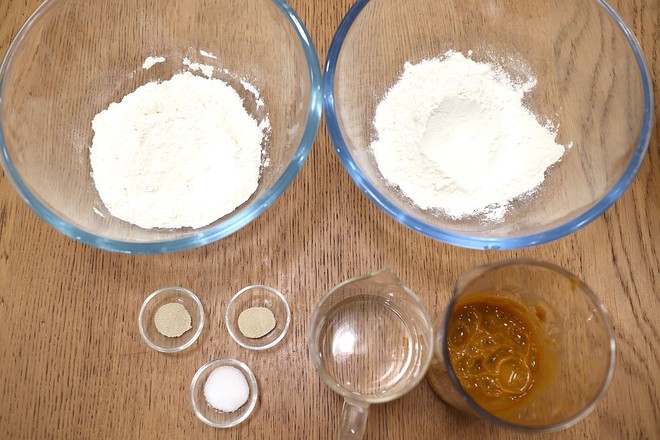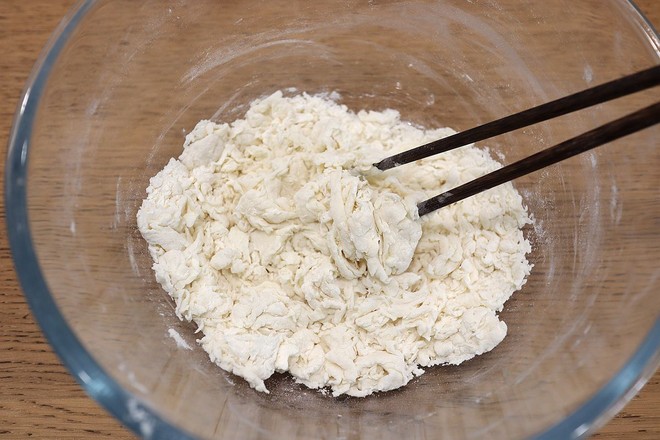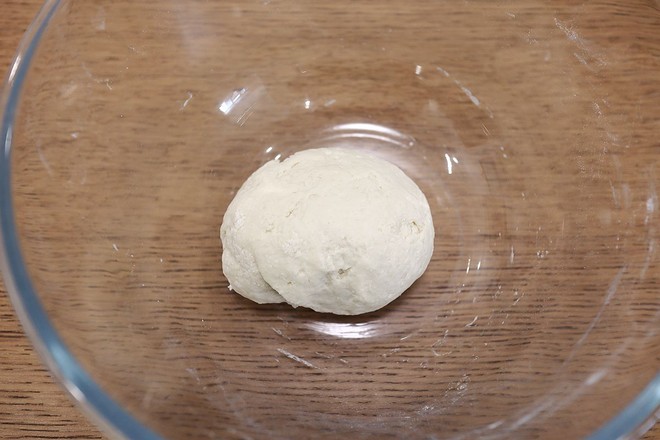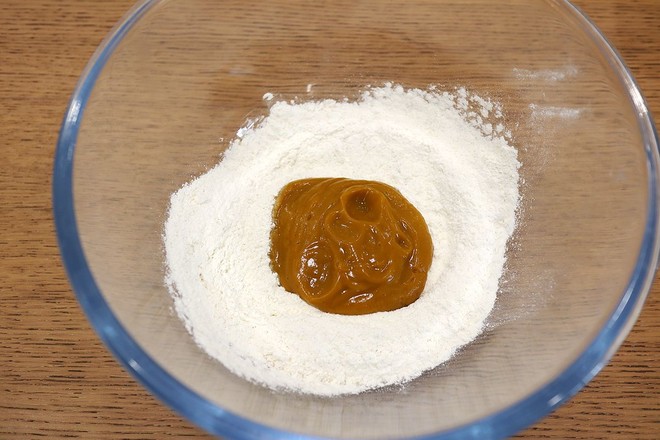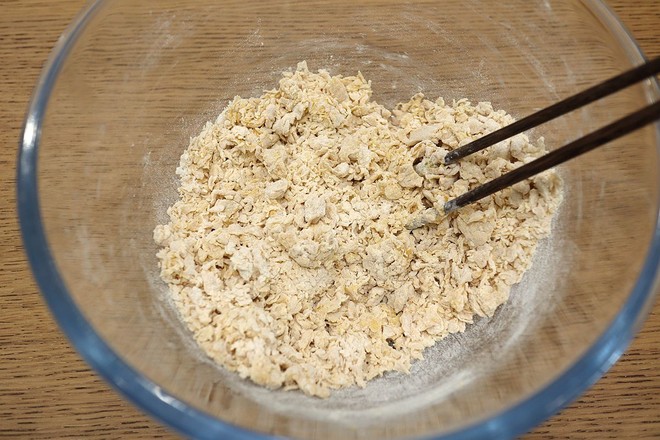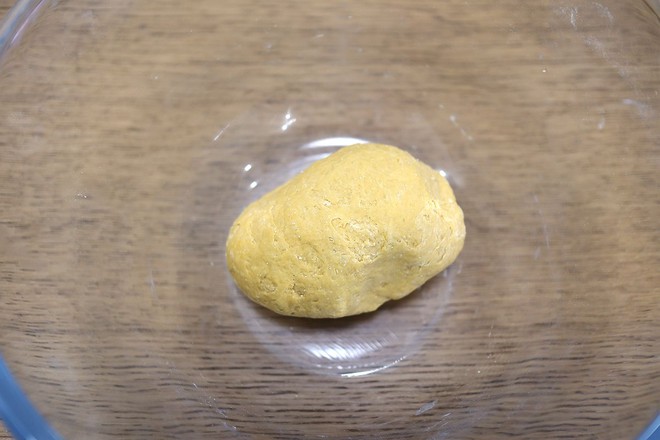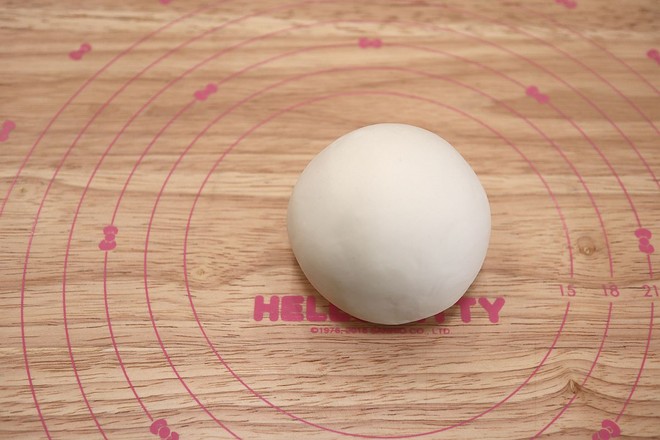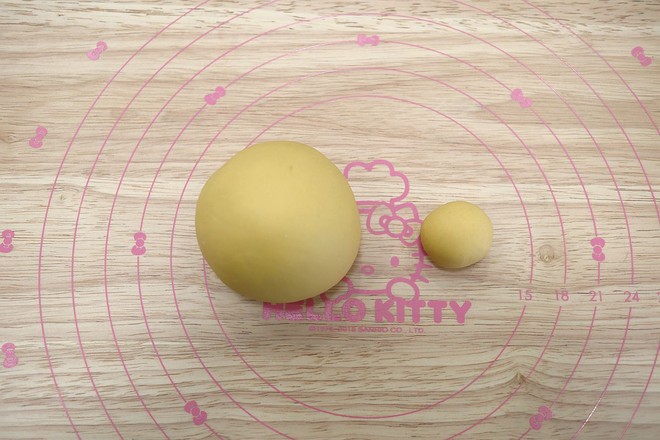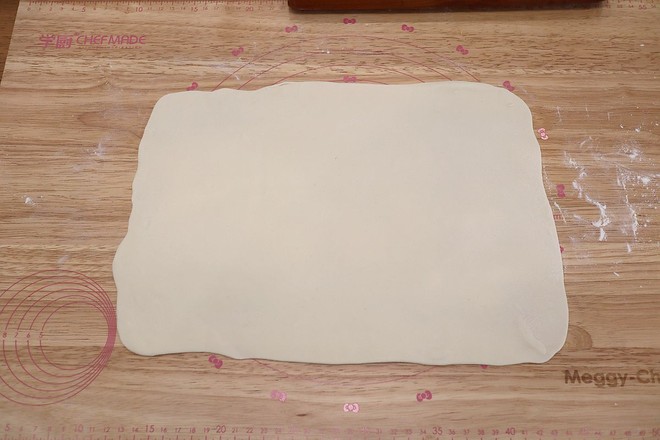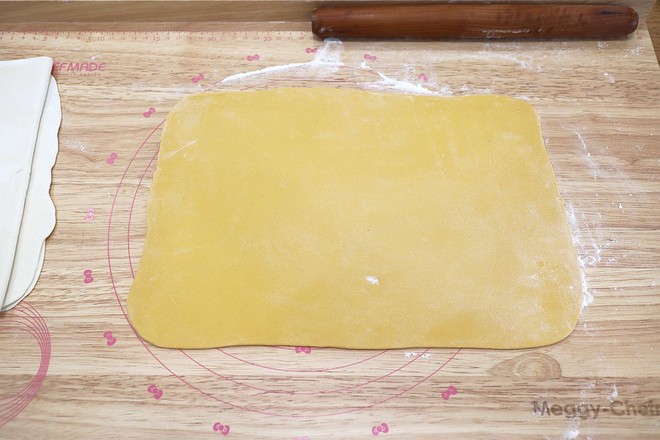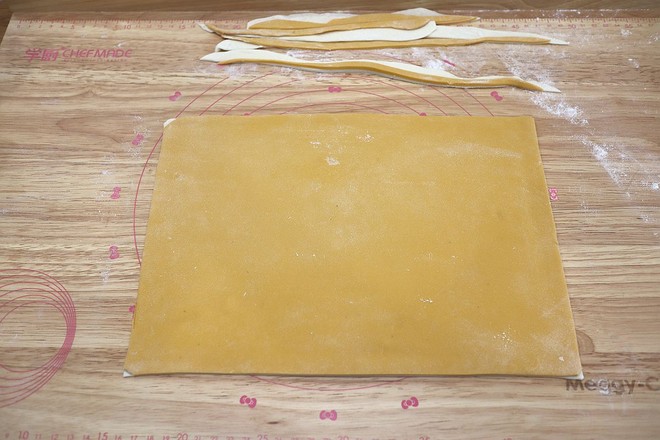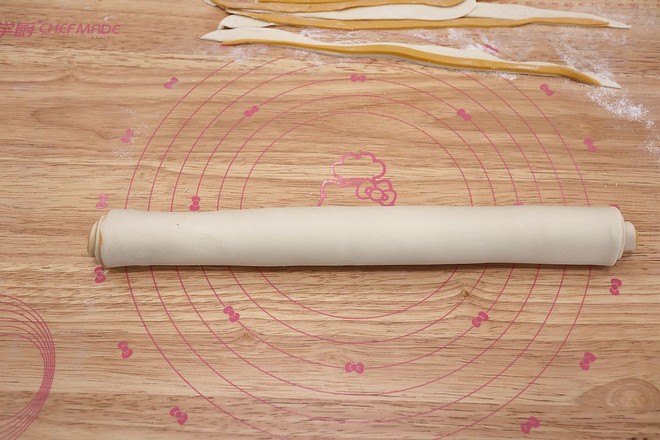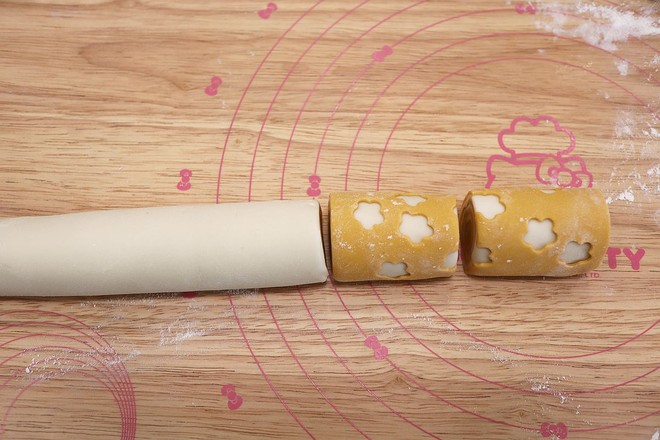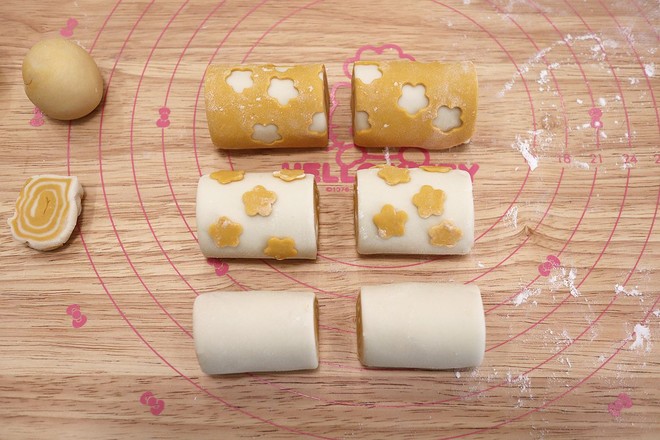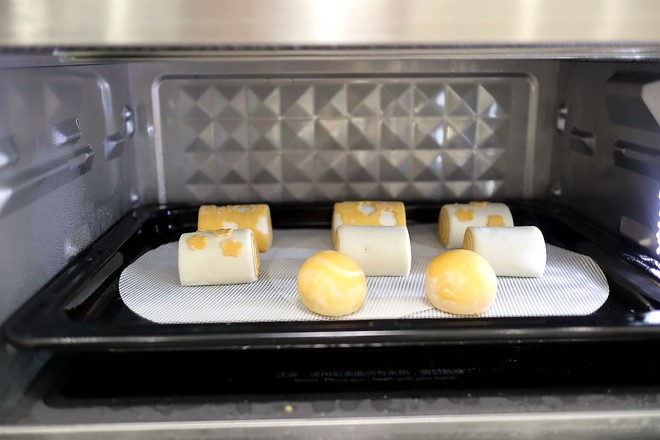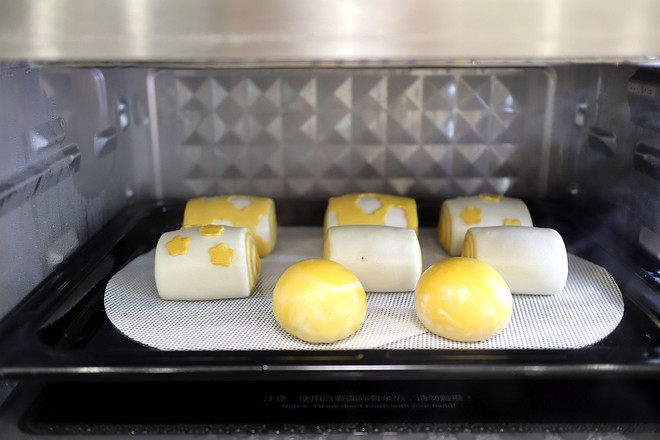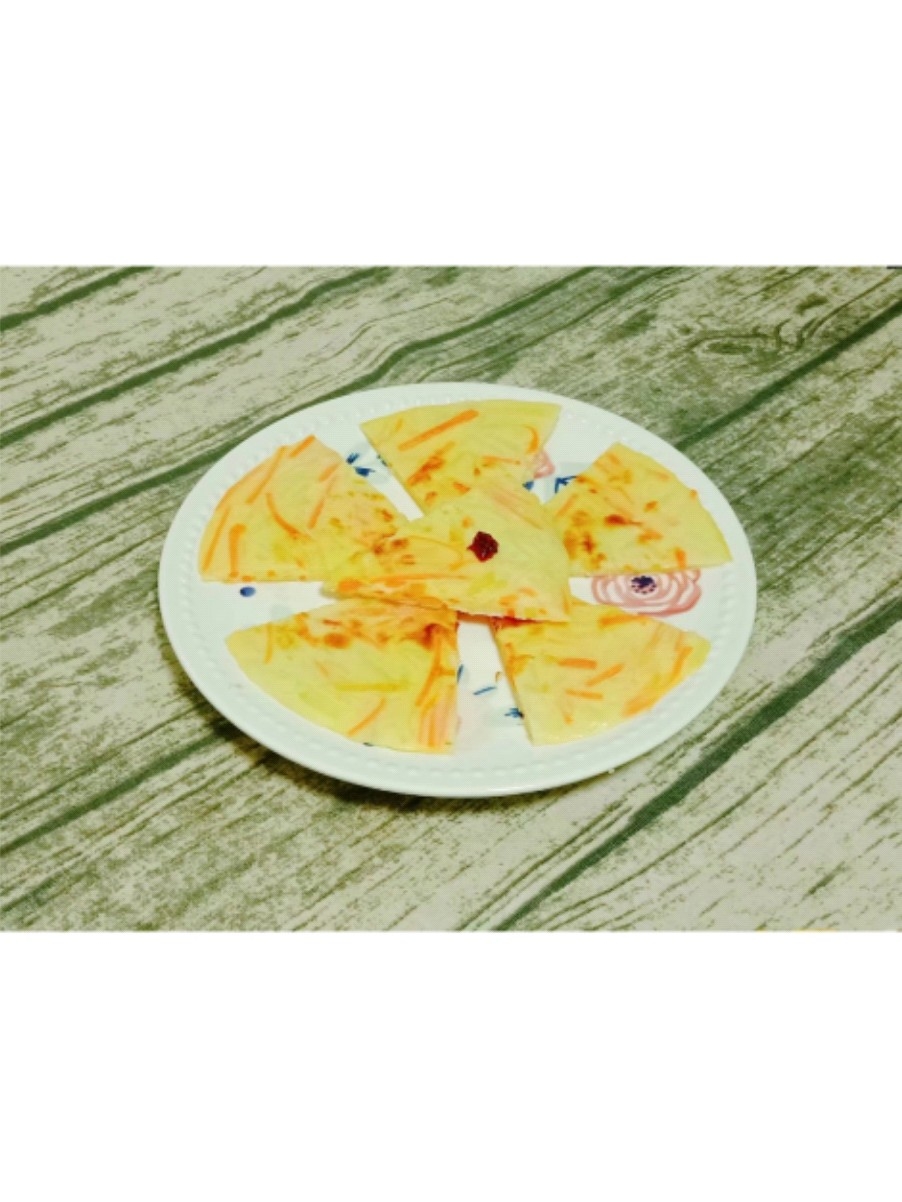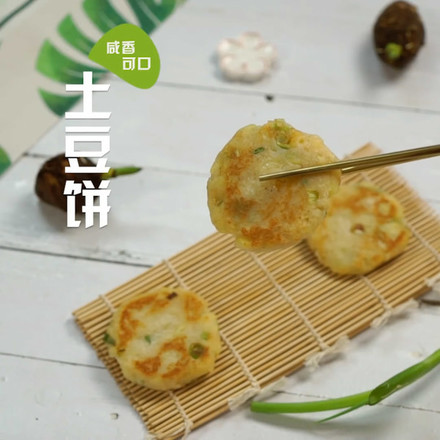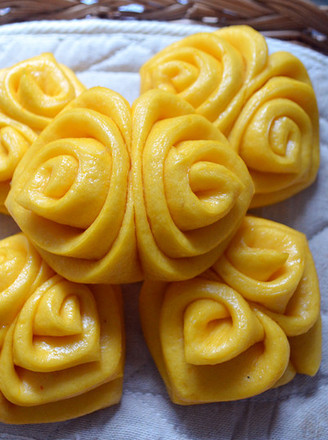Pumpkin Buns
1.
Peel the pumpkin, remove its flesh and seeds, cut into thin strips, put it on a plate, and put it in a steamer;
2.
Steamed on high heat for 10 minutes, the pumpkins are all soft and rotten;
3.
Put the pumpkin shreds into the cooking cup;
4.
Make a delicate pumpkin paste;
5.
Prepare the ingredients: weigh 150 grams of the flour of the two types of dough and put them in a basin. Use 1.5 grams of dry yeast for each portion of flour. Add 4 grams of sugar to the white dough to provide nourishment for the yeast. Pumpkin puree in cold water at room temperature and dried. ;
6.
Pour dry yeast and sugar into 150 grams of flour, 85 grams of cold water at room temperature, stir it with chopsticks to form a floc; the water absorption of flour and the humidity of the environment are different, so the amount of water can be added gradually; the amount of water is 55-60% of the amount of flour ;
7.
Knead the dough without dry powder again. Because you need to knead another pumpkin dough, cover the white dough tightly with a fresh-keeping bag to prevent the water from evaporating;
8.
Pour dry yeast into 150 grams of flour, and then pour about 100 grams of pumpkin puree; the thinness of pumpkin puree is different, so you can adjust the amount according to the next step of stirring;
9.
Stir it with chopsticks to form a flocculent. If there is too much dry powder that can not mix well with the noodle flocculent, add more pumpkin puree;
10.
Knead it into a dough without dry powder by hand, cover it tightly with a fresh-keeping bag to prevent evaporation of water content;
11.
Put the previously kneaded white dough on the chopping board, and press and knead the dough to make it smooth and delicate. This is a key step to ensure that the buns have a bright surface and a fine interior; hold the kneaded dough in a basin. minute;
12.
When kneading the white dough, use the method of kneading the white dough to knead the pumpkin dough. The kneaded pumpkin dough is smooth and delicate, and a small dough of about 20 grams is separated; the pumpkin dough is buckled in a kneading bowl to prevent evaporation;
13.
Sprinkle a little flour on the chopping board, and roll the white dough into a rectangular dough sheet with a thickness of about 2, 3 mm; the length and width are about 30*25CM;
14.
Roll the pumpkin noodles into the same noodles as the white dough;
15.
With the white noodles underneath, spray a little cold water on the surface, and spread the pumpkin noodles on top; to make the buns tidy, cut off the irregular noodles around with a sharp knife;
16.
Roll up and down into a roll, do not leave air in the middle, and press the seal underneath;
17.
Roll out 20 grams of pumpkin dough into thin slices, the length of which is the length of two steamed buns, and engrave patterns with flowers or other shapes in the middle;
18.
Spray cold water on the corresponding position of the noodle roll, wrap the pumpkin noodles with patterns on the noodle roll, press it gently with your hands, and cut out two steamed bun rolls in a sawing manner with a sharp knife;
19.
Cut the remaining dough rolls into 4 raw steamed buns, two of which are pasted with the carved flowers, and a little cold water on the back of the flowers can be firmly adhered to the surface of the green; the remaining leftovers can be mixed into a dough and kneaded into a dough Two small round buns;
20.
Place the raw steamed buns on a steaming tray with a steaming mat, and place them in a steaming box to ferment for 20 minutes; the steaming box can be heated for 1 minute with a small amount of steam and then turned off, so as to provide temperature and humidity for the growth of yeast; The steamer can be heated in advance and kept between 30-40 degrees;
21.
When the green body is 1.5 times the original size, it can be steamed, and steam for 18 minutes; do not take it out after steaming, and simmer for 5 minutes before taking it out to prevent the surface from wrinkling due to sudden cold.
Tips:
1. Roughly knead the two doughs first, and use the 5-minute jet lag to save effort and time when kneading the dough;
2. Smooth and delicate dough is a key point to ensure the success of steamed buns;
3. Because there is no need for secondary fermentation, and the yeast is slowly working during the operation, the fermentation time after shaping should not be too long to prevent over-fermentation from deforming the steamed buns; the dough can be steamed when it is about 1.5 times the original. Up.

